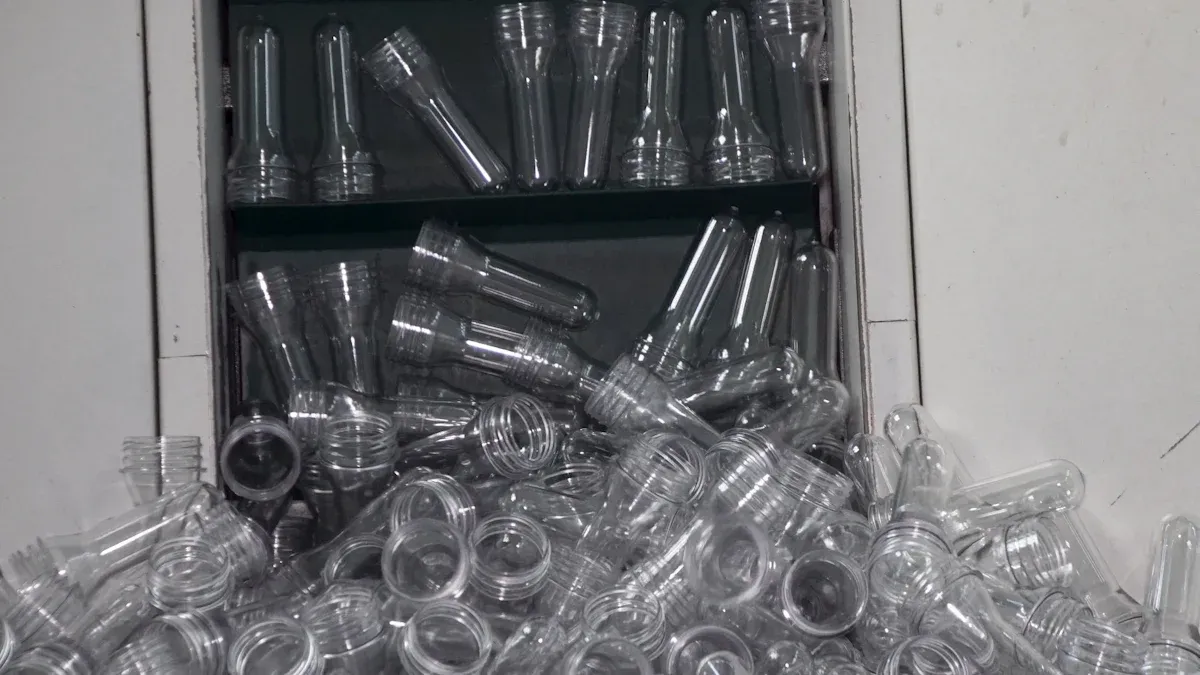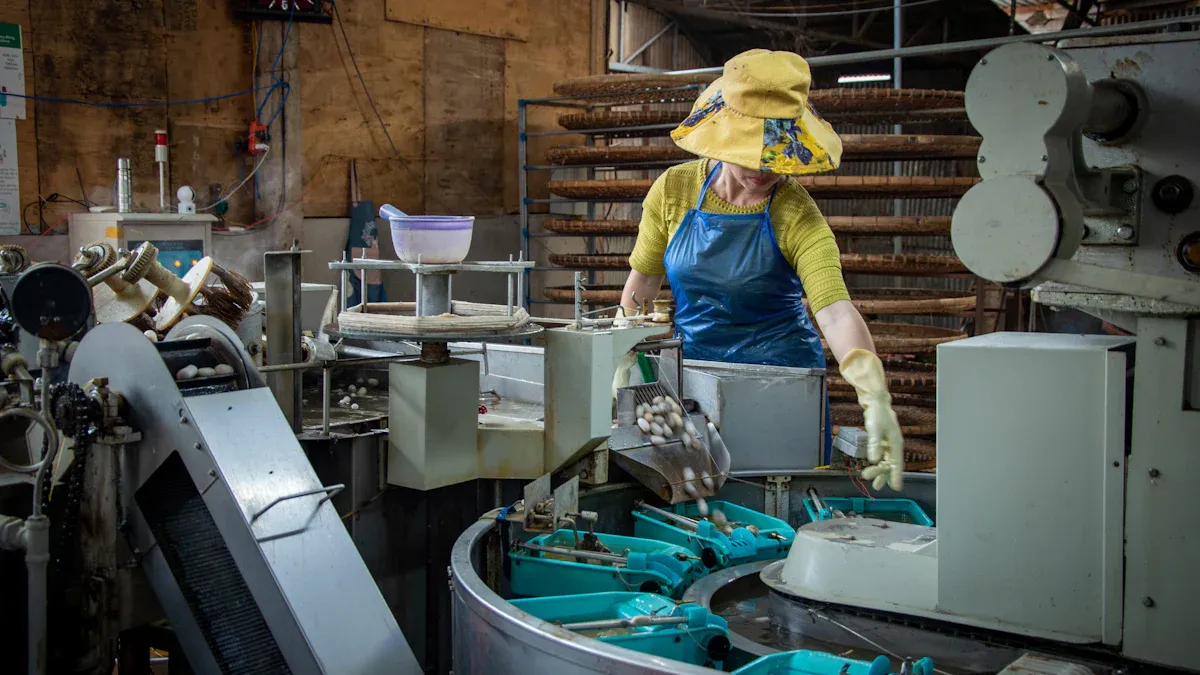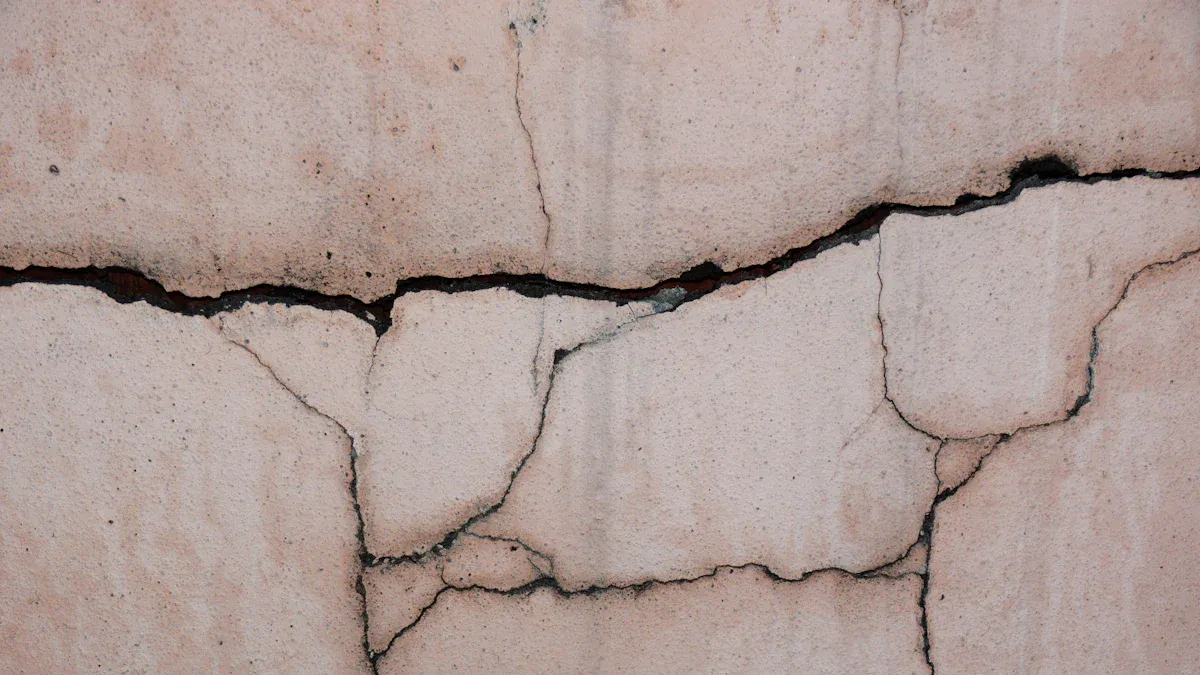
Precision plays a vital role in injection mold design, especially for small electronic components. A slight miscalculation can lead to defects, wasted materials, and increased costs. Studies show that advancements like the MRB-YOLO model achieve an impressive 91.5% mean average precision, with an 8.2% accuracy boost compared to older methods. These improvements highlight how precision directly impacts quality and performance.
Avoiding common pitfalls in mold design can also save you time and money. Selecting the right tooling and focusing on manufacturability principles ensures shorter cycle times and fewer errors. These steps not only enhance efficiency but also maximize your return on investment.

Consistent wall thickness is essential for creating high-quality injection molded parts. It ensures uniform cooling and prevents defects that can compromise the structural integrity of your components. When the walls of a part are even, the material flows smoothly during the molding process, reducing the risk of turbulence. This consistency also improves the overall appearance of the part, making it more suitable for applications like overmolding, where precision is critical. By prioritizing uniformity, you can enhance both the functionality and aesthetics of your design.
Non-uniform wall thickness can lead to several production anomalies that affect the quality of your injection molded parts. These include:
- Warping: Uneven cooling causes parts to deform, leading to misaligned features.
- Sink Marks: Insufficient packing pressure in thicker areas creates surface depressions.
- Weld Lines: Poor material flow results in weak points where molten plastic meets.
These defects not only reduce the durability of your parts but also increase production costs due to rework or scrap. Addressing these issues early in the design phase can save you time and resources.
You can achieve uniform wall thickness by adopting proven strategies. Advanced simulation software helps predict material flow and deformation, allowing you to refine your design before production begins. Managing process parameters is another effective approach. For instance, maintaining a pressure drop between 30–70 MPa and keeping the Reynolds number below 2000 ensures smooth mold filling. Studies have shown that optimizing these parameters can reduce shrinkage by 37.8% and warpage by 53.9% in PC/ABS cell phone shells. These adjustments also minimize defects like sink marks, improving the overall quality of your parts. By leveraging these techniques, you can create reliable and efficient injection mold designs.
The material you choose for injection mold design directly affects the durability and efficiency of your molds. Different materials have varying lifespans, which can influence the overall cost and quality of your production. For example, polypropylene molds can last up to 1,000,000 cycles, while polycarbonate molds typically endure between 100,000 and 200,000 cycles. The table below highlights the lifespan of common materials used in injection molds:
| Material | Lifespan (Cycles) |
|---|---|
| ABS Plastic | 100,000 - 300,000 |
| Polycarbonate | 100,000 - 200,000 |
| Polypropylene | 500,000 - 1,000,000 |
| Nylon (Polyamide) | 100,000 - 300,000 |
| PVC | 100,000 - 500,000 |
| Glass-filled Polymers | 600,000 |
| Standard Plastics | Up to 1,000,000 |
Using abrasive materials like glass-filled polymers can reduce mold lifespan. However, adjusting injection pressure and temperature can extend mold life by up to 15%.
Many designers overlook the importance of numerical analysis and simulations when selecting materials. These tools help you predict how materials will behave during the injection process. Without them, you risk choosing materials that lead to defects in injection molded parts, such as warping or weak weld lines. Ignoring the compatibility of materials with overmolding processes is another common mistake. This oversight can result in poor adhesion between layers, compromising the part's functionality.
To select the best material for your design, follow these steps:
1. Define the application requirements, including mechanical load, temperature, and environmental exposure.
2. Assess material properties like thermal and chemical resistance.
3. Consider manufacturing constraints, such as flow behavior and compatibility with equipment.
4. Evaluate cost-effectiveness, including energy consumption and cycle time.
5. Ensure compliance with regulations and prioritize sustainability.
6. Prototype and test the material to verify its performance.
7. Iterate based on testing feedback to refine your choice.
By following these guidelines, you can optimize your injection mold design and create high-quality features for small electronic components.
Draft angles play a critical role in ensuring smooth ejection of parts from molds. Without them, parts may stick to the mold, causing damage during removal. By incorporating draft angles, you reduce friction between the mold and the part, allowing for easier ejection. This design feature also minimizes the risk of defects like scratches or warping, which can compromise the quality of your components. For small electronic parts or overmolding applications, even minor adjustments to draft angles can significantly improve production efficiency and part durability.
Ignoring draft angles can lead to several performance issues during injection mold design. These include:
- Increased friction during ejection, which can damage parts and raise rejection rates.
- Surface defects like scratching, warping, and inconsistent finishes, leading to higher post-production costs.
- Accelerated wear and tear on molds, reducing their lifespan and increasing maintenance expenses.
These problems not only affect the quality of your parts but also disrupt production timelines, resulting in unnecessary delays and costs.
To optimize your design, follow these best practices for draft angles:
- Use a standard draft angle of 1 to 2 degrees for most materials and geometries. For more complex parts, consider angles between 1 and 5 degrees.
- Adjust the angle based on the material used. For example, softer plastics may require smaller angles, while harder materials benefit from larger ones.
- Test your design using simulation tools to ensure the angles meet the requirements of your production process.
Incorporating proper draft angles not only reduces friction during ejection but also ensures non-damaging removal of parts. This simple yet effective feature enhances the overall quality and efficiency of your injection mold design.

Undercuts are unique features in injection-molded parts that can complicate the manufacturing process. These include protrusions, holes, or recessed areas that prevent the direct removal of parts from the mold. While undercuts can enhance the functionality of your design, they often increase production complexity. For example:
- Undercuts can hinder the ejection process, making it difficult to remove parts without damage.
- They may require additional mold pieces, which raises manufacturing costs.
- Advanced measurement tools, like coordinate measuring machines (CMMs), are often necessary to ensure precision in parts with intricate geometries.
In electronics manufacturing, precision is critical. Even small deviations in undercut dimensions can affect the performance and safety of your components. Simplifying or eliminating undercuts during the design phase can improve efficiency and reduce costs.
Undercuts introduce several challenges in injection mold design. The table below highlights some common issues and their implications:
| Challenge Description | Implication |
|---|---|
| Undercuts prevent direct removal of the core, requiring additional mold pieces. | This increases the complexity of the mold design and can lead to higher production costs. |
| Use of standard collapsible cores can lead to damage if the design is not optimal. | This can result in production delays and increased costs due to the need for repairs or redesigns. |
| Collapsible cores can enhance efficiency but still require engineering improvements. | Without advancements, production may not reach optimal efficiency, impacting overall productivity. |
| Flexing steel collapsible cores can reduce cycle times by up to 30%. | This significant reduction can lead to cost savings and increased output in manufacturing. |
These challenges highlight the importance of addressing undercuts early in the design process to avoid costly delays and inefficiencies.
You can manage undercuts effectively by adopting smart design strategies. Start by evaluating whether the undercut is essential for the part's functionality. If it is not, consider redesigning the part to eliminate the feature. For necessary undercuts, use advanced mold components like collapsible cores or side actions. These tools allow for smooth ejection without damaging the part.
Simulation software can also help you predict potential issues with undercuts. By analyzing the mold's performance before production, you can make adjustments to improve efficiency. For overmolding applications, ensure that the materials used are compatible and that the undercuts do not interfere with adhesion. These steps will help you create a reliable and cost-effective injection mold design.
Proper placement of parting lines is essential in injection mold design. It directly affects the visual appeal and functionality of the molded part. A strategically placed parting line minimizes its visibility, ensuring the part looks polished and professional. Additionally, it prevents interference with the part's intended use, maintaining its operational reliability. For overmolding applications, careful placement ensures seamless adhesion between layers, enhancing both aesthetics and performance.
Improper placement of parting lines can lead to several production challenges. These include:
- Increased Defect Rates: Poor placement disrupts production consistency, raising defect rates by 30%.
- Material Leakage: Misaligned parting lines reduce holding pressure by 20%, leading to overpacking and material leakage.
- Excessive Force: Injection pressure increases by 15%, causing unnecessary stress on the mold and parts.
These issues not only compromise the quality of your parts but also increase production costs and time. Addressing parting line placement early in the design phase can prevent these problems.
You can optimize parting line placement by following proven strategies:
- Minimize Visibility: Position parting lines in less noticeable areas to enhance product aesthetics.
- Facilitate Mold Release: Ensure the placement supports smooth ejection, reducing defects and assembly difficulties.
- Maintain Structural Integrity: Align parting lines with the part's geometry to meet design specifications.
These strategies improve product quality, reduce visible seams, and ensure reliable mold performance. By optimizing parting line placement, you can achieve higher customer satisfaction and remain competitive in the market.
Cosmetic finishes play a crucial role in the success of small electronic components. A high-quality finish not only enhances the product's appearance but also boosts its marketability. Customers often associate a polished surface with superior quality, which directly impacts their purchasing decisions. For instance, a high-gloss surface finish can elevate the perceived value of a product, making it more appealing to consumers. The table below highlights how cosmetic finishes influence customer satisfaction:
| Metric Type | Description | Impact on Customer Satisfaction |
|---|---|---|
| Surface Finish Quality | High-gloss surface finish is often requested by customers for aesthetic appeal. | Directly influences product marketability and consumer expectations. |
| Aesthetic Appeal | Products with superior cosmetic finishes are more appealing to consumers. | Enhances perceived value and satisfaction, reducing dissatisfaction risks. |
By prioritizing cosmetic finishes, you can ensure your products meet consumer expectations and stand out in competitive markets.
Cosmetic defects can undermine the quality of injection-molded parts, leading to customer dissatisfaction. Some common issues include color variation and surface discoloration. These defects often result from excessive shear rates or contamination during production. For example:
- Color Variation: Caused by high shear rates at the gate, which disrupt material flow.
- Surface Discoloration: Linked to UV exposure or contaminants like assembly sealants.
Advanced testing methods, such as FTIR and DSC, have identified these causes. Adjusting gate depth to reduce shear rates can minimize color variation, while controlling contamination sources can prevent discoloration. Addressing these factors early in the design process ensures better results.
Achieving a flawless cosmetic finish requires careful planning and execution. Start by optimizing your mold design. Proper placement of gates and vents ensures smooth resin flow, reducing the risk of defects. Material selection also plays a key role. For instance, steel molds typically produce a better polish than aluminum molds. Additionally, surface finishing techniques can address imperfections like parting lines or ejector pin marks.
For overmolding applications, ensure the materials used are compatible to avoid adhesion issues. By focusing on these aspects, you can create injection mold designs that deliver both functionality and aesthetic appeal.
Avoiding common pitfalls in injection mold design can significantly enhance your production outcomes. Issues like inadequate venting, poor draft angles, and misaligned parts often lead to defects, increased costs, and wasted time. By addressing these challenges, you can achieve smoother part ejection, improved durability, and higher production consistency.
Precision and attention to detail are essential for long-term success. Tighter tolerances improve part quality, while enhanced surface finishes boost both aesthetics and functionality. Consistent repeatability ensures reliable results across production runs, saving you time and resources.
Adopting strategies like waste reduction, automation, and digital design tools can further optimize your processes. These insights empower you to create efficient, high-quality molds for small electronic components, ensuring better performance and cost savings.
Plastic injection molding is a manufacturing process where molten plastic is injected into a mold to create parts. It is important because it allows you to produce complex features with high precision, making it ideal for small electronic components and other intricate designs.
You can ensure design for manufacturability by considering factors like material selection, wall thickness, and draft angles during the design phase. This approach minimizes defects, reduces costs, and improves production efficiency.
Keeping manufacturability in mind ensures your design is practical for production. It helps you avoid issues like warping, sink marks, or ejection problems, saving time and resources while improving part quality.
You can handle complex features by using advanced tools like simulation software and collapsible cores. These solutions help you predict and address potential challenges, ensuring smooth production and high-quality results.
Optimizing your mold design improves part quality, reduces production costs, and shortens cycle times. It also enhances durability and ensures consistent results, making your manufacturing process more efficient and reliable.